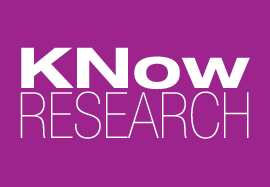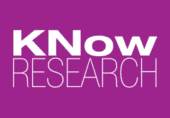4 Steps to Confront Workplace Friction as a Team
Welcome back to Part 2 on our series of Exploring Friction in the workplace! Be sure to check out Part 1!
None of us are immune to friction affecting our work. When tools malfunction, when we learn something new, or when an injury or illness interjects, these challenges can alter how we show up professionally. Try as we might to squash them, these setbacks can ripple outward and impact our working relationships. While we may not be able to control life’s curveballs, we can control how we respond in moments of friction.

Anticipating friction together as a team and creating an open dialogue early can transform its trajectory from destruction to productive. We’ve developed a 4-step process at KNow on how to befriend friction in the workplace, and we invite you to try this approach out with your team. It will allow you and your team to identify, reflect on, and reframe tensions within their professional relationships. Following these steps, your team should feel more equipped for responding constructively when friction arises in workplace relationships.
1. Identify Your Professional Community
Take a moment to think about your workplace relationships and who you regularly interact with at work. Who are the reoccurring characters who pop up in your professional life: your core team, stakeholders, participants, vendor partners, etc.? Each one carries an inherent value, and invariably, each relationship comes with a unique set of challenges too. Then, as a team, reflect on your common workplace interactions and relationships to set up a shared framework and a common lens for the types of relationships where friction might exist.
2. Pause and Reflect
Then, invite your team to observe their interactions within their professional network for a week. Which relationships are affected by the most friction? What triggers a stressful moment? Have the team record their tensions on their own time, jotting them down on a sticky note (physical or virtual), and posting them in a communal space or a Miro board. As the notes accumulate, it’s exciting to notice common themes and patterns across each relationship slowly emerge!
3. Practice Cognitive Reappraisal
After a week of observations, it’s time to regroup. At this point, your team will be asked to face some potentially dark and dismal sticky notes detailing the most uncomfortable aspects of their jobs—oof! It’s time to call in some backup: cognitive reappraisal. This is the act of reframing an adverse reaction to a situation and transforming it into a constructive thought. It forces you to recognize negativity for what it is but deny it the power to dictate how you respond to the threat and how you treat the people around you.
Participants can reframe their sticky notes full of friction using prompts like:
- Is there anything I’m grateful for in this situation?
- What can I learn from this experience?
- Do I have any prior knowledge or experience that may help me move forward?
4. Air it Out!
After taking time to reflect and practice cognitive reappraisal, invite your team to share their reflections on the experience. We suggest breaking out into small groups, which provide a confidential space to be vulnerable and share personal stories of confronting friction within their working relationships.
After about 10-15 minutes, bring everyone back together to share their “aha” moments and what they learned from the full experience of exploring and reframing friction in their workplace relationships. Take time to celebrate the hard work! Have the group take a communal deep breath together. Taking a small pause for mindfulness will allow the team to shake off any lingering anxieties before the workshop comes to an end.
Remember — No Pain, No Gain!
Confronting tensions within workplace relationships is no easy feat, but ignoring friction brewing underneath the surface can be detrimental to both our work and our well-being. When we take responsibility for our knee-jerk responses to stress and actively reframe our perspectives, we can transform friction from a destructive force into a productive catalyst for professional (and personal!) growth.
We want to hear from you! How has engaging with friction —instead of avoiding it—led to a moment of discovery or growth in your work?

